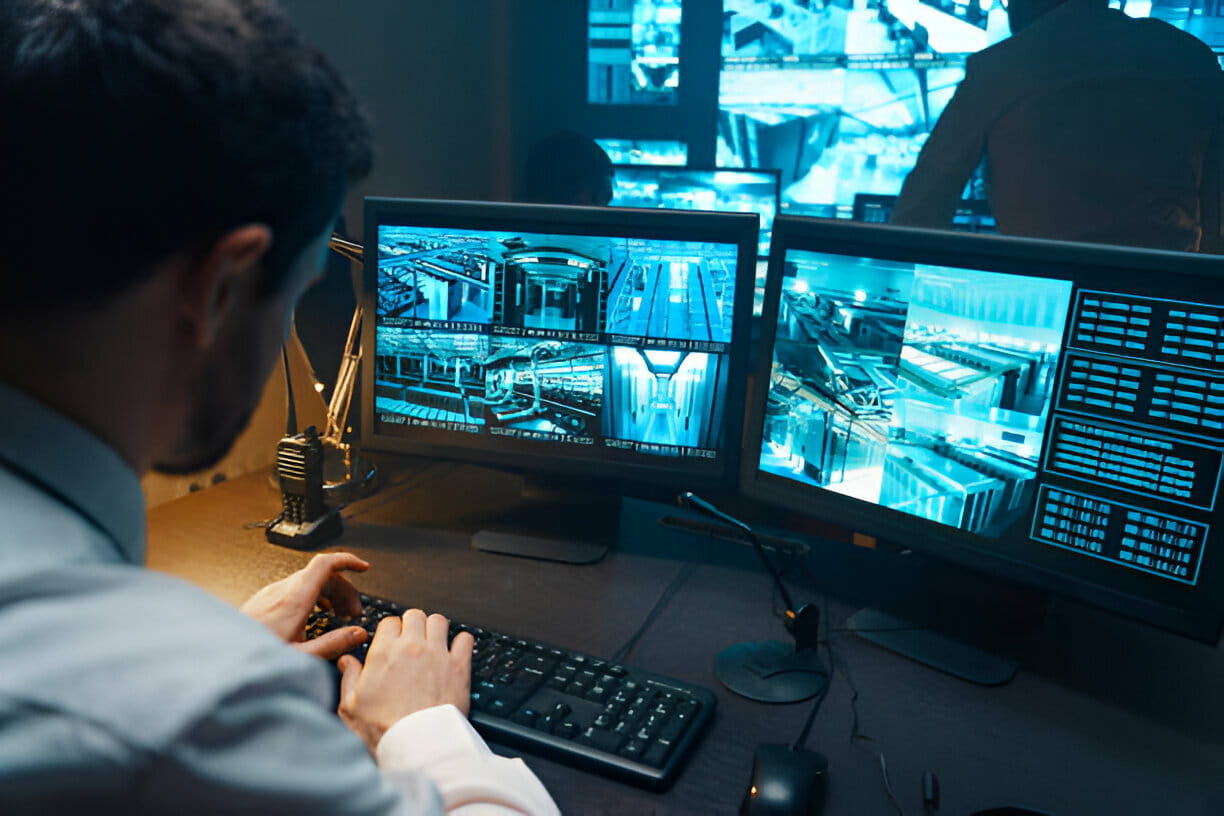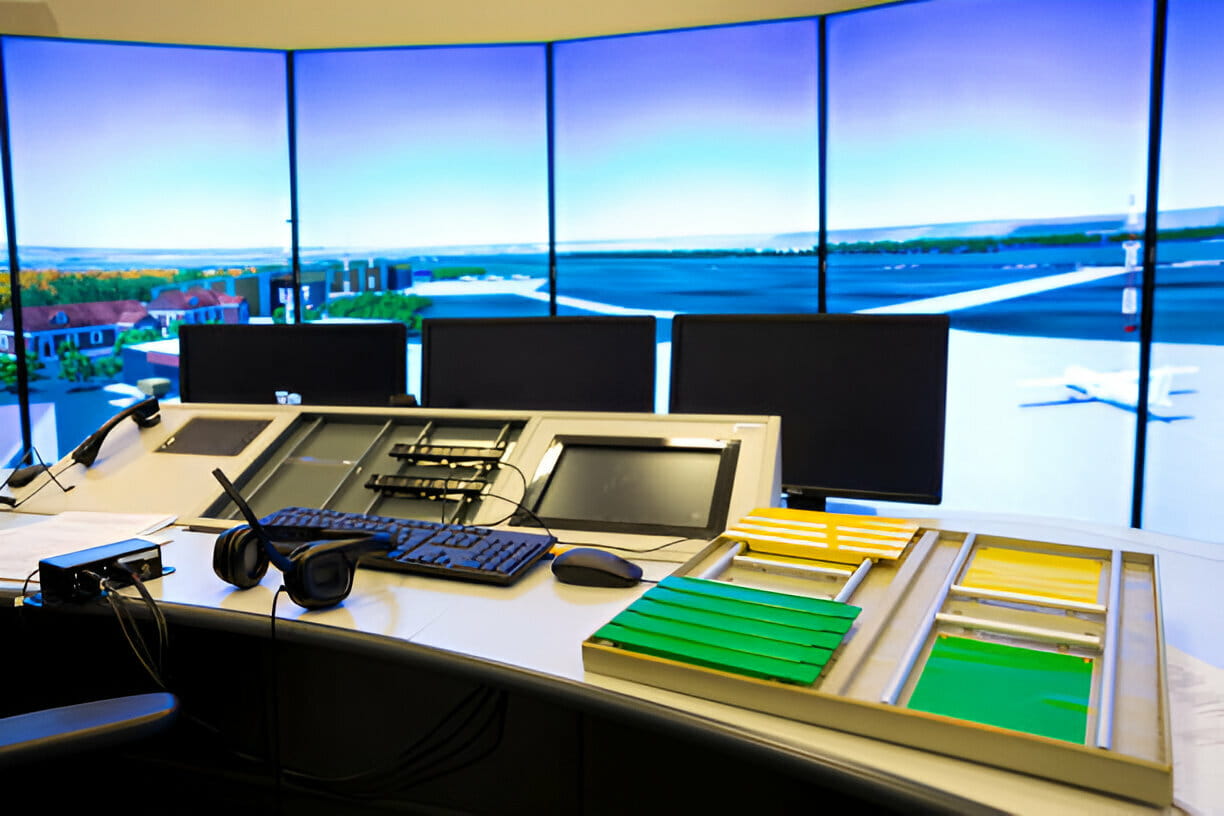

The control room is the central space where the operations of a large facility can be monitored and controlled. You’ll typically find control rooms in industries like:
Control rooms serve three core functions:
Control rooms allow key personnel to monitor critical systems and processes from a central location.
Operators can oversee various sensors, cameras, alarms, communications systems, and other IoT devices through control panels and display technology like video walls.

This centralized monitoring gives staff enhanced situational awareness so they know the exact state of operations at all times. It also enables early detection of any potential issues.
When something goes wrong, seconds matter. Control rooms are equipped to rapidly:
Thanks to centralized monitoring and established protocols, operators don’t need to waste precious time scrambling to understand what’s happening. They can immediately execute the proper emergency response plan.
Monitoring data in real-time also allows control room staff to:
This type of data-driven optimization improves productivity, safety, security, and overall function of the various processes under the control room’s watch.
Now that you know the main high-level roles control rooms play, let’s explore some examples of their function across different industries:
One of the most well-known types of control rooms has to be air traffic control.
Inside air traffic control towers and route centers, controllers monitor radar systems and communicate directly with pilots by radio to:
This coordination is critical for avoiding collisions and minimizing delays so flights operate efficiently and safely.
If an aircraft encounters an emergency, the team can also quickly dispatch help and assist with landing coordination.

Inside power plants, control room engineers oversee the function of reactors, turbines, generators and other process equipment through advanced SCADA and automation systems.
Personnel monitor critical parameters like:
When something exceeds normal thresholds, automated alerts notify engineers so they can respond and troubleshoot accordingly.
This oversight aims to ensure smooth, continuous energy generation and grid supply. If an abnormal event transient occurs, emergency action plans can also kick in to prevent disruptions.
From professional sports stadiums to mega event venues, control rooms help facility managers effectively:
Ops personnel can even pull up weather radars to monitor for incoming storms.
This integrated event command and control optimizes fan experience and safety.
After learning about what control rooms do across key industries, the common thread is clear:
Control rooms are the central nervous system for managing complex operations spanning large physical footprints.
They empower personnel to have enhanced:
Without these mission-critical nerve centers, response efforts would be much slower and far less coordinated during routine operations…let alone crisis situations.
Disjointed decisions could even be made with incomplete, outdated information. Ultimately this friction and inefficiency would:
So if flawless execution is critical for success, control rooms are the vehicle to drive it.
Control rooms have come a long way from early iterations that relied mostly on manual readouts from analog gauges and early radar systems.
As technology continues to advance at warp speed, the control room of 2024 will look quite different than early pioneers of old. Here are two key trends on the horizon:
The massive influx of data from exponentially growing sensors, IoT devices and other systems is extremely challenging for humans to parse in real time.
This is where AI and predictive analytics come into play in a major way in the years ahead. Machine learning algorithms can rapidly:
Microsoft is even researching ways to use AI to combat human fatigue in the control room. Advanced software could help prune unimportant data and reduce cognitive load for controllers on long shifts.
Over time, AI won’t replace human controllers – but instead act as a smart assistant augmenting staff to achieve peak performance in the control room.
Teleoperations and remote management will also expand considerably by 2030 and beyond.
With sites that may be extremely remote or even prohibitively dangerous for on-site staffing 24/7, relying more extensively on remote control rooms offers numerous benefits.
Centrally-located controllers can tap into:
This allows seamless monitoring and supervision of remote facilities from virtually anywhere without needing to physically be on location – reducing risk and logistical challenges.
Some futurists even predict this may lead to drone-based systems allowing mobile control rooms that provide oversight across wide areas with vehicle-mounted control capabilities.
Only time will tell what the future has in store for these indispensable command centers!
I hope this guide gave you keen insight into what control rooms are, exactly what purpose they serve, and why they’re so mission-critical for safety and efficiency across many industries.
In our increasingly complex, interdependent world, control rooms sit at the nucleus – enabling enhanced:
Monitoring → Rapid Response → Optimized Operations
And with technologies like AI, advanced analytics and remote operations coming down the pike, tomorrow’s cutting-edge control rooms will play an even more pivotal role.
So next time you see one of those mysterious little rooms full of screens in an action movie or passing by an industrial facility, you’ll know precisely what crucial activities are happening inside!